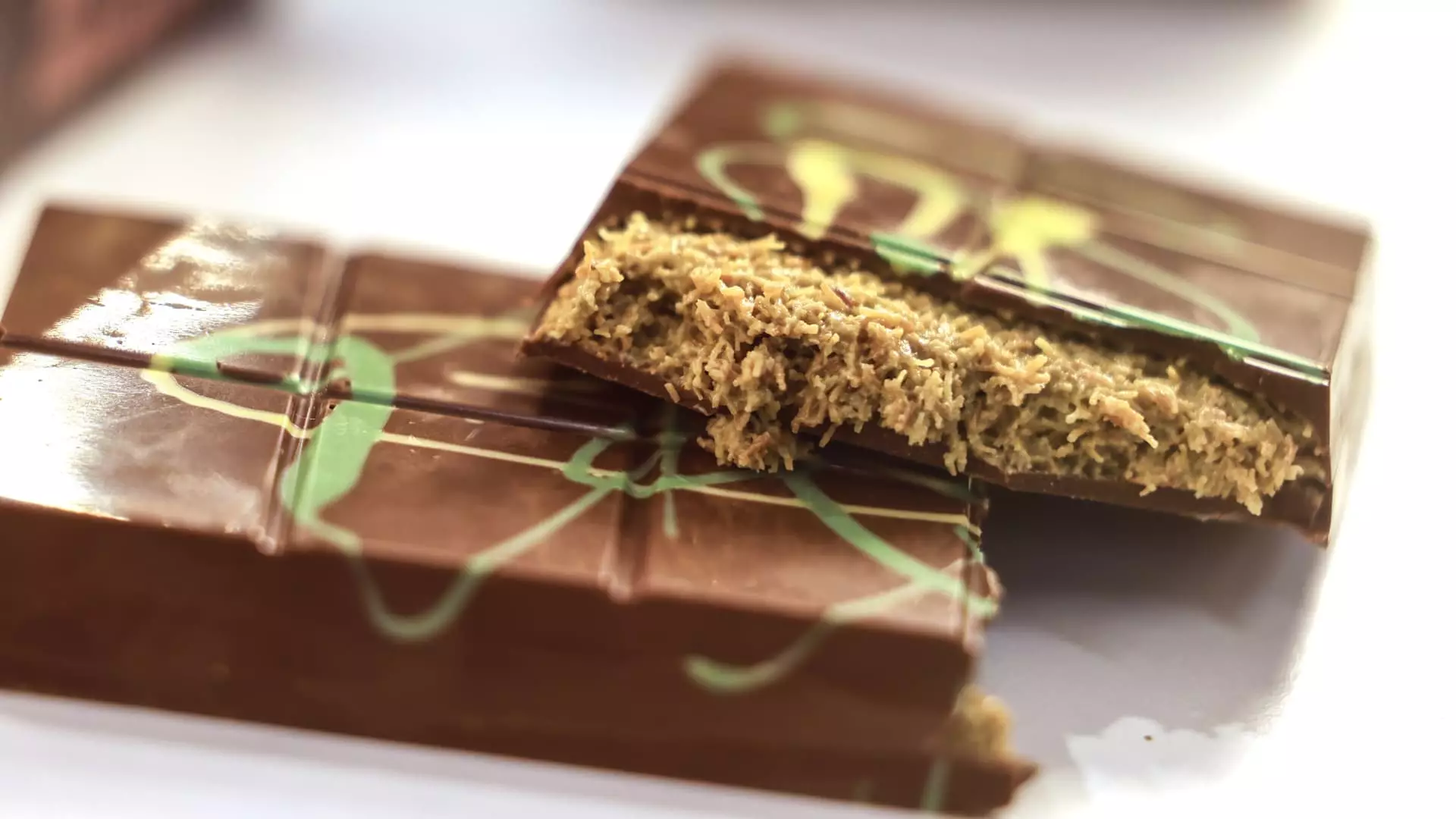The world of culinary delights is no stranger to trends, but the meteoric rise of “Dubai chocolate” exemplifies a unique narrative fueled by personal desire and collective excitement. Initiated by Sarah Hamouda, the founder of Fix Dessert Chocolatier, this confectionery innovation stemmed from a modest pregnancy craving, unveiling a blend of pistachio cream, kadayif, and tahini enveloped in rich chocolate. The initial motivation behind this creation, a desperate yet delightful longing, resonates with many who have ever succumbed to life’s sweet temptations. It is this relatable, human connection that more than mere ingredients transformed a simple chocolate bar into a global sensation.
As Hamouda describes the profound experience of her creation going viral, one must ponder: what drives a seemingly niche treat to echo in hearts and wallets alike? It is more than chocolates; it is a symbol of creativity, passion, and cultural influence wrapped in a compelling story.
Counterfeit Culture: The Dark Side of Sweet Success
However, success inevitably invites imitation, prompting a battle of authenticity versus replication that can overshadow genuine artistry. Though the flavors of Dubai chocolate have captivated many around the globe, its lack of protection under international trademark law makes it vulnerable to exploitation. By allowing mass-produced imitations to flood the market, the identity of Dubai chocolate is at risk of dilution.
Take Lindt, for example. With its rumored new permanent Dubai chocolate recipe developed after substantial earnings, one cannot help but question whether they are enhancing the chocolate landscape or simply commodifying what was once a heartfelt, artisan creation. As these widespread replicas proliferate through retailers like Trader Joe’s, Target, and Costco, the market becomes saturated with variations that often lack the depth and soul of the original. This commercialization raises an essential debate about what it means to appreciate culinary art – have we traded authentic experiences for convenience?
The Hive of Collaboration and Celebration
Yet, amidst the imitation lies a remarkable truth: collaboration is integral to innovation. Brands like Shake Shack and Starbucks are leveraging the allure of Dubai chocolate to create limited-edition offerings, each harnessing the power of consumer demand surging from social media. These crossovers signify more than mere gimmicks; they underscore how food trends can connect diverse cultures through shared flavors, reflecting the modern-day consumer’s inclination toward exploration and variety.
Crumbl’s brownie spinoff and Baskin-Robbins’ international efforts amplifying the Dubai chocolate excitement point towards a progressive culinary dialogue that cherishes experimentation while paying homage to roots. What’s important is that the dialogue should be respectful and mindful of origins, ensuring that the community from which these flavors emerge isn’t overshadowed by “the next big thing.”
A Sweet Recipe for Future Success
As the Dubai chocolate trend celebrates its eighteen-month milestone, excitement continues to swell. With Nuts Factory in New York proclaiming to be the pioneer of the city’s version and experiencing overwhelming demand, it’s evident that the new wave is not merely a passing fad. The statistics from Technomic, showing a remarkable 22.3% increase in chocolate-pistachio flavor combinations on restaurant menus, indicate a shifting landscape towards these extravagant fusions that delight the senses.
Yet, the path forward requires a carefully considered strategy by all involved—a fine balance of innovation and respect for the culinary arts. Acknowledging authenticity while embracing enterprise is essential if we want to nurture not just a trend, but a culture that celebrates food as an experience rather than just a commodity.
Ultimately, the story of Dubai chocolate is one that might serve as a metaphor for our rapidly evolving global society: a blend of tradition and modernity, authenticity and imitation. As we navigate this complex terrain, we can relish the sweet moments of connection and creativity that chocolate brings, but we must remain vigilant against the tide of mere duplication that threatens to overshadow its unique brilliance.

